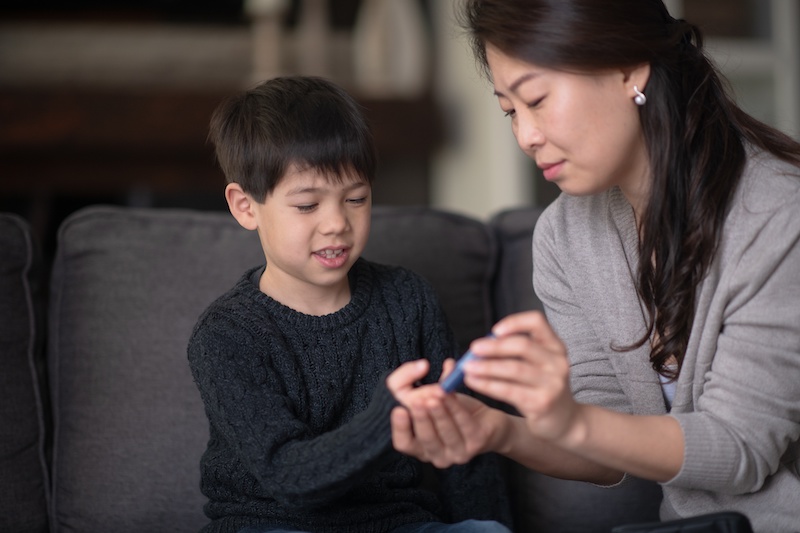
Photo courtesy of Getty Images
Approximately 34.2 million (or 10%) of children and adults are living with diabetes in the U.S. Diabetes is a life-long disease that occurs when the body does not produce enough insulin resulting in elevated blood sugar levels. To keep glucose levels in check, patients with diabetes are required to take multiple blood glucose tests and insulin injections per day. If this condition is not controlled properly, diabetes can cause serious health problems such as heart disease, kidney disease, nerve damage, eye damage and foot damage. It’s so important to prepare and know how to manage your child’s diabetes in any emergency.
The last few years have taught us many lessons on the importance of emergency preparedness whether it’s preparing for pandemics, hurricanes, floods, winter storms and power outages. Being prepared for any emergency means stocking up on non-perishable food, water (for drinking and household use), cash, batteries and other supplies. Just as you have a severe weather and fire emergency plan at home or work, you should have a diabetes emergency plan and supply kit ready for your child at all times.
With hurricane season here, don’t get caught in an emergency without your child’s medications and diabetes supplies. Don’t wait until there is a threat in the Gulf. Get medications and supplies early. The entire city rushes to the pharmacy at the same time and pharmacies may run out of what you need.
So, what should you put in your child’s diabetes supply kit? Below are important items to include. This checklist can also be helpful as you plan for family vacations and recreational (camping) trips.
Diabetes supplies:
- Meter and testing supplies, log book, alcohol swabs and hand sanitizer
- Back up insulin (long and rapid acting) and a way to keep it cool
- Pump Supplies (pods, cartridges, infusion sites, chargers/batteries)
- Pen needles/syringes
- Glucose tablets/juice for treating hypoglycemia
- Ketone testing supplies
- Charged battery packs (for insulin pumps and phones)
Insulin storage:
- Don’t put all of your child’s insulin in one refrigerator in case the power goes out or you can’t get to your house. If possible, separate insulin supplies into two refrigerators. Leave a few pens/vials/insulin pump supplies at a family or friend’s house.
- Don’t wait to refill prescriptions. Just because you have refills available, doesn’t mean that the pharmacy will always have what you need in stock. So, it’s always a good idea to be prepared.
- Stock up on Frio bags (to keep insulin cool)
Information to keep handy:
- Know your child’s insulin doses and how to go back to injections when on an insulin pump
- Create an emergency contact list that includes the names and phone numbers of your child’s pediatrician, pharmacy, and the company that provides insulin supplies for your child.
- If you are a parent with a child with diabetes, make sure your child’s school has clearly identified the school staff members who will assist your child in the event of an emergency evacuation
- Make sure to keep your health insurance card handy.
Click here for a complete list of what to include in your diabetes emergency plan checklist. We hope these tips on diabetes care and management will help you and your family be prepared in an emergency.
Texas Children's Diabetes and Endocrine Care Center is a leader in the research and treatment of children with diabetes and endocrine disorders. Click here to learn more about our services.

